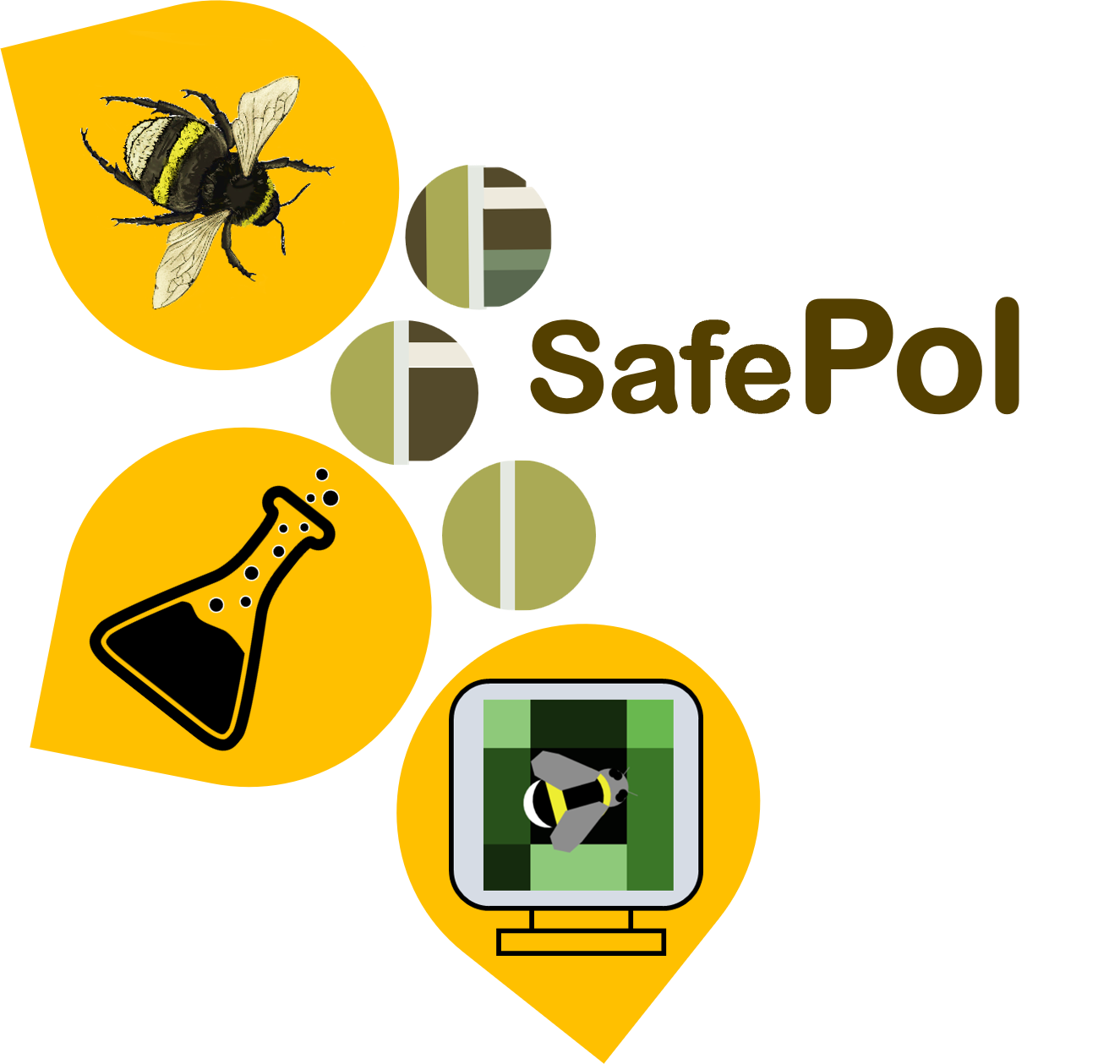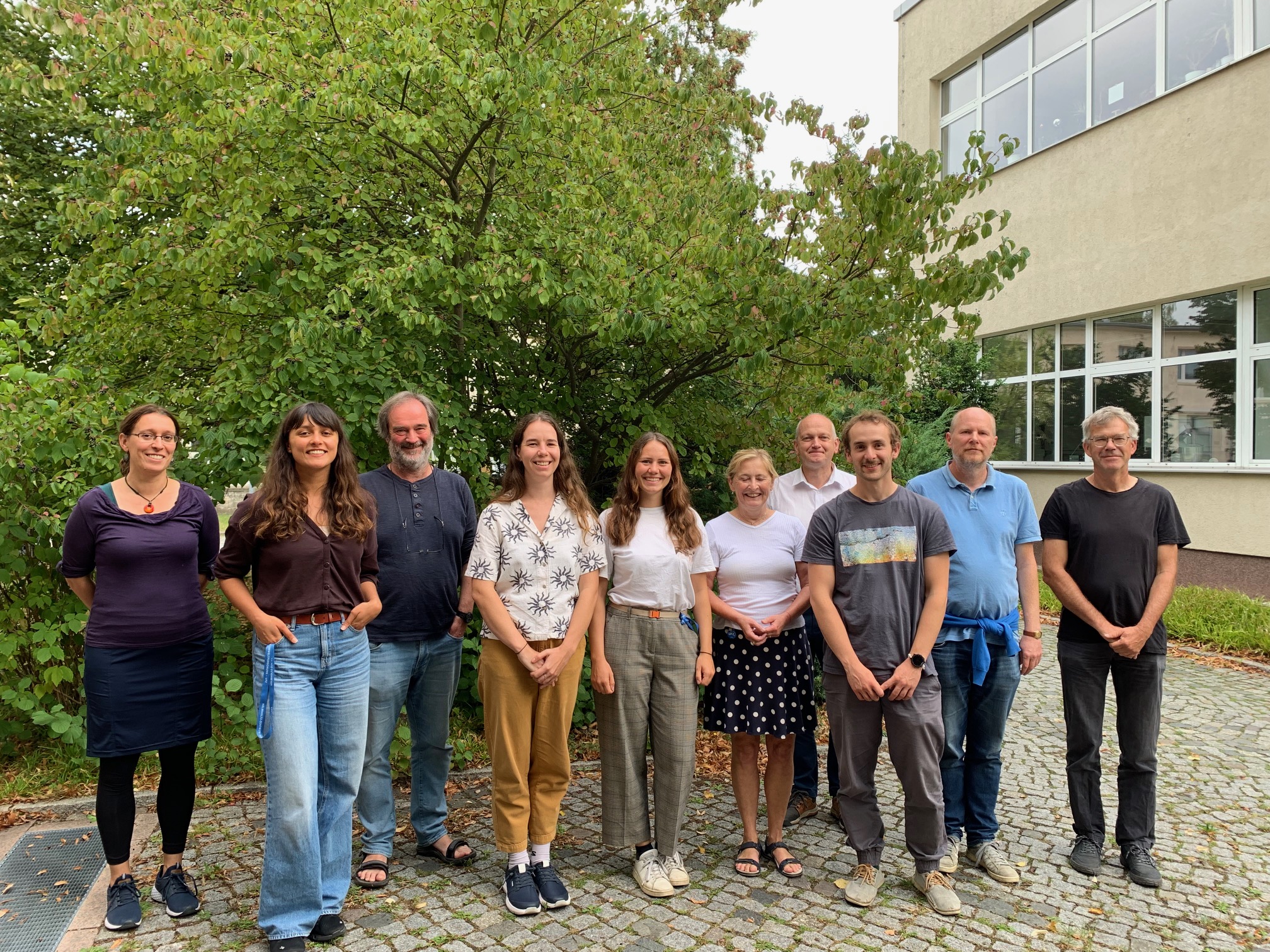
Safeguarding Pollinators facing multiple Stressors in multifunctional landscapes (SafePol)
Pollination is a key ecosystem function of direct relevance to the human economy and well-being. However, dramatic declines in the abundance and diversity of pollinators have been reported across Europe and globally. These declines are driven by several processes, most notably land use change aimed at ensuring and increasing agricultural yields and changing climatic conditions. Agricultural intensification causes severe adverse impacts on the population performance, foraging, and pollination behaviour of insect pollinators. This is due to (i) the reduction in the amount and quality of semi-natural habitats that provide food resources and nesting sites, (ii) the increase in toxicological stress resulting from the application of a broad range of plant protection products, and (iii) the alteration of the composition and configuration of various landscape elements, which can mitigate resource loss and toxicological stress (. Climate change adds additional stress on pollinators by changing resource availability and impacting the behaviour, health and reproductive success of most species. Because these factors often co-vary and act synergistically, and because pollinators respond at a variety of spatial scales, it is important to consider these factors together, rather than focusing on single stressors. Understanding this complexity is necessary for designing sustainable and climate-resilient future ecosystems and multifunctional landscapes and for improving the risk assessment of plant protection products. We have identified the following research gaps: 1) Insights into the putative interactions between landscape structure, nutritional stress, and pesticide exposure on pollinators, and the related consequences for plant-pollinator systems. 2) Knowledge of the mechanisms that lead to pollinator resistance and resilience against multiple stressors and across spatial scales. 3) Mechanistic models to identify and predict how these mechanisms are affected by the dynamics of current and future land use.
Landscape-dependent pesticide and other chemical exposure risks on bumble bees: Impacts on bee health and foraging behaviour – PI Martin Krauss, EXPO
Chronic pesticide exposure at realistic doses causes lethal and sublethal effects on bumble bees. In particular, impacts on foraging abilities cause impairments in colony performance. Local and landscape-scale factors play important, but different, roles on the extent of exposure. However, a solid link between pesticide application across landscape gradients and the resulting exposure of bumble bees (mainly via pollen and nectar), internal pesticide concentration dynamics and the observed effects on bumble bees is still missing. Furthermore, the impact of chemicals others than pesticide active ingredients, either from agricultural use (adjuvants and formulation additives in plant protection products) or from other sources (e.g. traffic-related chemicals, biocides and pesticides used in households or gardening) had hardly been studied. To link external exposure concentrations to internal concentration dynamics and the observed effects on bumble bees, a better understanding of toxicokinetic (TK) processes (uptake, elimination, and metabolisation) is required. The influence of temperature on TK processes will also provide further insights on temperature-dependent chemical risk. TK rates can also be variable in individuals belonging to the same species, due to factors such as differences in anatomical traits, behaviour, metabolisation capacity, and microbiome differences.
PhD student: Ashleen Smith
Supervisory team: Martin Krauss, Werner Brack
Effects of controlled pesticide/mixture and heat exposure on bumble bee’s health and behaviour, PI Ulrike Rolle-Kampczyk - Moltox
It has been well-documented that chronic pesticide exposure at field-realistic doses causes lethal and sublethal effects on bumble bees. The pesticide exposure impacts especially foraging abilities and thus impairs colony performance. Local weather and landscape-scale factors play important but different roles in the extent of exposure. However, a fundamental link between internal pesticide concentrations across landscape gradients with other local weather conditions and the observed sub-lethal effects on bumble bees is still missing. For example, an increase in temperature due to climate change can be an additional stress factor which, together with exposure stress, can affect the health of bumblebees. Unraveling the molecular patterns of the response to sublethal exposition and combining it with behavioral consequences under controlled conditions in terms of pesticide exposure and heat will allow us to bridge this gap. PhD project 2 aims to examine the functional disturbances in bumble bee metabolism caused by the identified exposures (original substances and/or biotransformation products at normal and elevated temperatures) and their impact on potentially associated behavioral abnormalities that could significantly affect individual and colony bumblebee survival.
PhD student: Johanna Ziegler
Supervisory team: Ulrike Rolle-Kampczyk, Nico Jehmlich, Martin von Bergen
Options for land-based mitigation of multiple stressors to plant-pollinator systems, PI Susanne Dunker - PHYDIV
Multiple pressures impact plant-pollinator systems and land-based mitigation strategies are needed to reverse ongoing pollinator declines and to increase their resilience against anthropogenic pressures, such as pesticide exposure or climate change. This is highly relevant in the context of international commitments and regulations, in particular the EU Nature Restoration Law, the EU Pollinators Initiative, and the EU Farm to Fork targets. The larger landscape context, for instance, impacts pollinator foraging behaviour and efficiency, while local habitat characteristics define nutritional resource availability and quality. Both aspects impact pollinators, but their relative importance is currently unknown and guidance about where to invest limited resources for restoration interventions is needed. In addition, potential co-benefits of such interventions within a multifunctional landscape context, e.g. when they also contribute to mitigating negative effects of climate change, are largely unknown.
Overall objective: Quantify the putative interactions between pesticide exposure, nutritional stress, heat stress, and landscape structure on pollinator behaviour and performance. Obj. 1: Identify the impact and relative importance of landscape structure and local floral resources (amount and nutritional quality) on pollinator foraging behaviour. Obj. 2: Assess the potential of alternative flower sources and their nutritional quality to mitigate the impact of pesticide exposure on pollinators within a landscape context. Obj. 3: Quantify the interactive effects of pesticide exposure and heat stress on pollinators within different landscape contexts.
PhD student: Marvin Rieck
Supervisory team: Susanne Dunker, Oliver Schweiger, Demetra Rakosy, Robert Paxton
Simulating Bumble Bee population dynamics under multiple stressors, PI Karin Frank/ Jürgen Groeneveld - OESA
A mechanistic simulation model (BEEHAVE) has been developed to investigate the impact of multiple stressors on honey bees (Apis mellifera). Since then the model has been evaluated by the European Food Safety Agency (EFSA PPR 2015) and applied several times. However, honey bees are not an ideal model species to investigate the impact of multiple stressors on wild insect pollinators. Therefore, a new model has been developed that allows the simulation of bumble bee colonies of up to six different species. In a recent study the Bumble BEEHAVE model has been embedded in a more general model environment that allows the import of spatial explicit land use data (BEE-STEWARD). However, this model has not yet been applied and tested with independent land use data, weather data and information on the temporal and spatial presence of toxicants. Also sub-lethal effects together with toxicokinetics have not been considered yet. Finally, land use patterns have been assumed to be static in previous applications ignoring known climatic and social trends. Therefore, we plan to utilize scenarios of future land use. The overall objectives of the project will be to simulate the putative interactions between pesticide exposure, nutritional stress, heat stress, and landscape structure on bumble bee behaviour, population dynamics of single and multiple colonies in the landscape. Apart from utilizing data sources describing current land use we will use future land use scenarios for the simulations to better understand the impact of expected trends on pollinator health.
Doktorandin: Isabell Halbhuber
Betreuer:Innen: Karin Frank, Jürgen Groeneveld, Christian Klassert
Updates:
- Kick-off Meeting 09.09.2025
- Presentation of SafePol at Integration Platform - Sustainable future land use - Retreat 06./07.11.2025 (Marvin Rieck)

